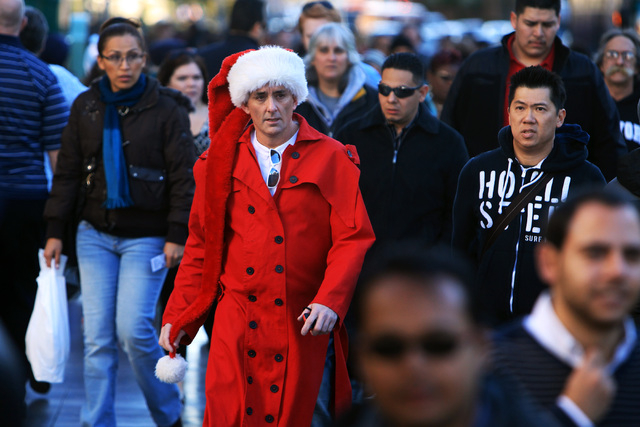How to deal with this ridiculous cold snap




Because Southern Nevada is famous for its record-breaking hot summers, people don’t often think about the cold.
But when dealing with cooler temperatures while hiking or staying active outside, experts say there are many things for people to consider.
Before heading out to hike, U.S. Forest Service recreational staff officer Del Rome says, make sure to check the temperatures.
“But that means the temperatures at Mount Charleston,” he says. “It might be 70 degrees in the valley but it can be 20 degrees cooler up there. People don’t think about it much.”
Bureau of Land Management spokeswoman Kristen Cannon says even when people are out in hiking areas such as Red Rock Canyon National Conservation Area, the day might feel like 50 degrees, but once the night settles in, the temperature can abruptly drop to the high 20s.
According to the bureau, in January and February, the high temperatures are around 50 degrees while the average low temperatures are between 29 and 31 degrees.
She adds it’s best to wear layers that can be shed during a hike. Plus, those items might come in handy if the temperatures drop again.
Rome says the fabric of clothing matters, too, when considering warmth.
Dressing in cotton is a really bad idea, he says, because if those garments get wet, they won’t dry as fast as people need them to.
Therefore, he says, people should consider materials such as nylon.
When improperly dressed, people can face hypothermia, when the body loses heat faster than it can produce it.
According to the Mayo Clinic, symptoms include shivering, dizziness, hunger, nausea, fatigue and increased heart rate.
As it worsens, the pulse might weaken, shivering might stop even though the body is still lacking heat and people might become more confused, slur their speech or become drowsy.
“Hypothermia can happen anywhere, it just depends on the conditions,” Rome says.
Even in midsummer, hypothermia is still possible in the higher elevations.
“People should bring extra clothes and stay warm and dry,” Rome says.
Aside from dressing for cold, Cannon says people should also think about applying sunscreen.
Rome adds especially in the snow areas, people can still get sunburned.
“The snow on the ground acts like reflectors and can amplify the sun,” he says. Which is a good reason to wear sunglasses, too.
Cannon says people should remember to drink plenty of water.
“You often forget because of the cooler temperatures,” she says.
Rome agrees, saying it is easier to remember during the summer when the heat makes people thirsty constantly.
The BLM recommends bringing at least one gallon for the day.
No matter the time of year, there are safety tips people should always remember, such as informing their friends and family where they are headed just in case.
People always assume in a worst-case scenario they can call for help if they get stranded.
“Your mobile phone might not work when you’re out there,” Cannon notes.
Also, she says, it never hurts to have extra gear in case people get stranded. This might include extra clothing and a flashlight.
She says people can carry an emergency thermal blanket, which starts out as a compact square but then unfolds to become full size and offers heat.
“Plan to always make it back in time,” she says. “But in case you don’t, the best-case scenario is to always prepare for the worst case scenario.”
For more tips on outdoor activities, visit blm.gov or gomtcharleston.com.
Contact reporter Michael Lyle at mlyle@reviewjournal.com or 702-387-5201. Follow @mjlyle on Twitter.
QUICK TIPS
Plan your trip.
Check weather conditions before heading out.
Tell someone where you’re going and when you’re expected back.
Dress in warm, dry layers that can be removed or added.
Use sunscreen.
Take and drink water to stay hydrated.
Consider emergency gear, such as a flashlight and compact thermal blanket


















